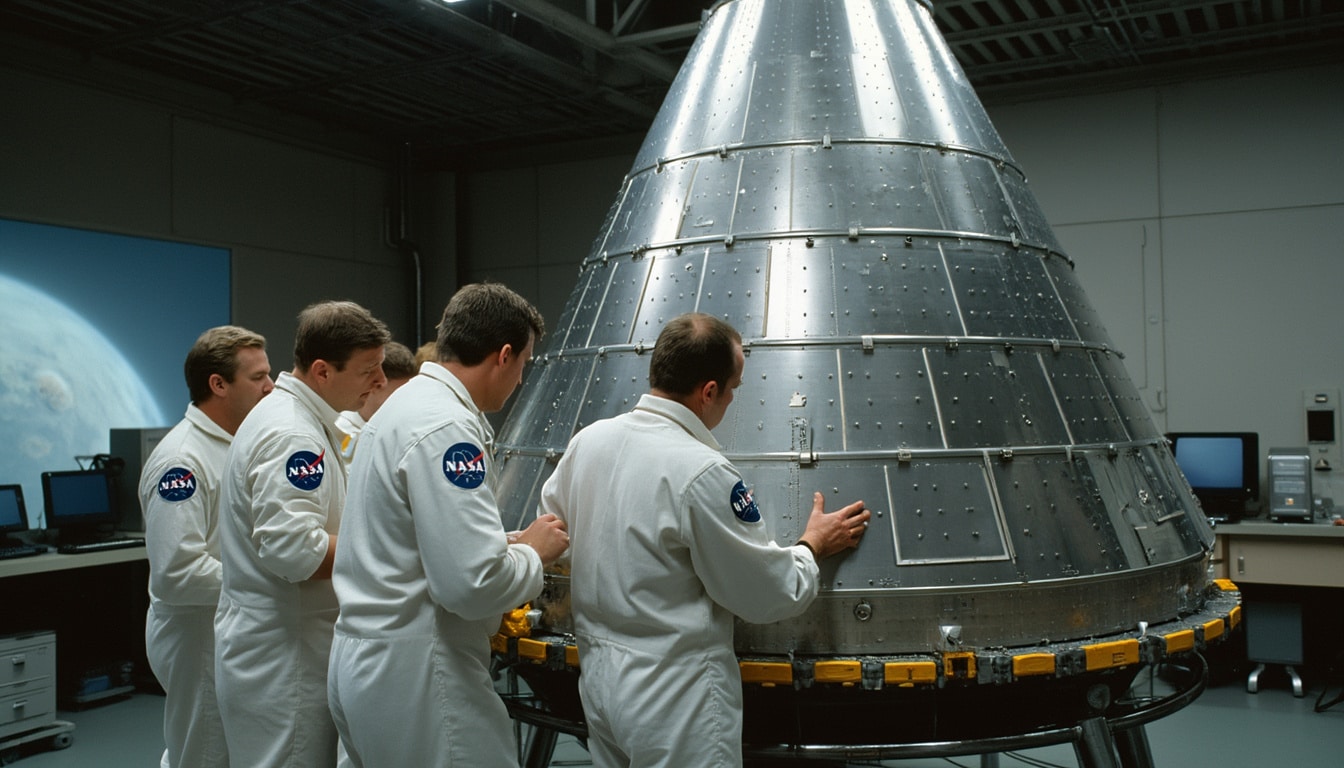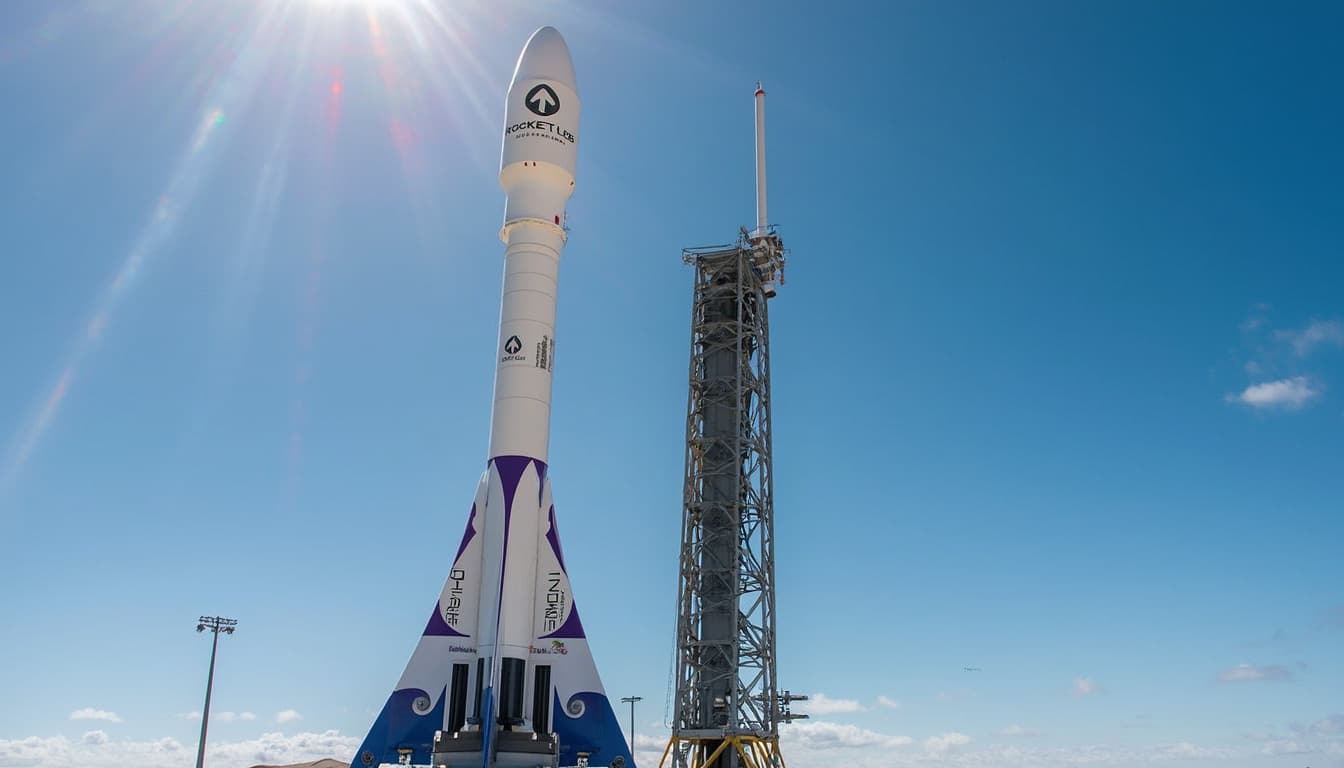The newest venture in space exploration marks a thrilling milestone as engineers at NASA’s Ames Research Center collaborate with Rocket Lab on the first-ever private mission targeting Venus. This mission signifies not just technological advancements but also the growing partnership between government space agencies and commercial entities. Utilizing cutting-edge space exploration technology, the spacecraft is engineered to withstand extreme conditions while searching for signs of life in the planet’s atmosphere. As the mission approaches launch, the advanced heat shield being affixed to the capsule becomes a crucial component of its success, ensuring the craft’s survival during its fiery descent.
This article elaborates on the collaboration between NASA and Rocket Lab, delving into the intricacies of the advanced heat shield developed for this mission. It also explores the implications for future commercial space travel, as private companies like Rocket Lab join the ranks of traditional space agencies such as NASA, Axiom Space, and SpaceX in the venture towards a deeper understanding of our cosmic neighbors.
NASA’s Collaborative Role in Private Space Missions
NASA has a rich history of pushing the boundaries of space exploration technology, and its partnership with private companies marks a new chapter in space exploration. In the case of the Venus mission led by Rocket Lab, NASA’s expertise in spacecraft thermal protection has been instrumental in developing the advanced heat shield necessary for withstanding Venus’ extreme atmospheric conditions. This collaboration highlights how NASA’s involvement can contribute to the success of commercial missions.

The Importance of NASA’s Heat Shield Technology
The heat shield in question, known as Heatshield for Extreme Entry Environment Technology (HEEET), was invented at NASA’s Ames Research Center. This innovative material is crafted to endure intense temperatures, reaching up to 4,500 degrees Fahrenheit. Such resilience is essential when the probe enters Venus’ atmosphere, where conditions are notoriously harsh and environments reach extreme heat levels. By deploying from Rocket Lab’s Photon spacecraft, the capsule will begin to take critical measurements from the moment it enters this challenging setting.
NASA is not only aiming to gather data through its thermal protection innovations but is also supporting the commercialization of space endeavors. By transferring this technology to private entities, NASA helps pave the way for a more robust space economy, enabling companies like Rocket Lab to thrive in an expanding market that includes sustainable approaches to commercial space travel.
Engaging the Public and Enhancing Knowledge
The collaborative effort between NASA and Rocket Lab encourages public engagement and education around space missions. By sharing insights into the technologies and processes used, the initiative sparks curiosity in aspiring scientists and the general public alike. Websites and social media platforms offer opportunities for direct communication and dissemination of information regarding the mission, further igniting interest in the field of astronomy.
Students and amateur astronomers are particularly encouraged to engage with the mission, with programs designed to allow them to follow the mission closely. Educational resources provided by NASA and Rocket Lab create pathways for future generations to delve into fields of God space exploration, engineering, and environmental science.
The Technological Innovations Behind the Venus Mission
The Venus mission showcases advanced engineering and innovative materials designed for the rigors of the cosmos. Focused not solely on the heat shield, this mission is a data-gathering exploration that could alter our understanding of the planet. A deeper examination reveals how multiple innovations intertwine to create a state-of-the-art spacecraft poised for success.

Advanced Heat Shields: Protecting From Intense Heat
The HEEET material used on the spacecraft represents the cutting edge in heat shield engineering. Not only does it protect the vehicle from scorching temperatures, it is also lightweight, adding minimal mass to the mission profile while maximizing performance. Engineers have dedicated countless hours to ensure optimization across various parameters, allowing the design to excel in a challenging environment.
By employing unique manufacturing techniques such as weaving the fibers in a specialized pattern, NASA engineers have produced a material that stands up to the testing of high-heat entries while maintaining flexibility. This expertise ensures that during the mission, the integrity of the probe is preserved as it makes its perilous descent.
Multi-Faceted Data Collection and Analysis
The mission aims to assess Venus’ atmosphere using a variety of scientific instruments aboard the spacecraft. The technology includes sensors designed to capture temperature, pressure, and composition data—to detect any signs that life might exist in the acidic clouds of the Venusian atmosphere. This analysis will add to the existing body of knowledge regarding planetary atmospheres within our solar system, offering comparative insights to other celestial bodies such as Mars.
Scientists hope these findings will foster a larger understanding of climate-related processes across planets, allowing for insights into planetary evolution and helping refine the search for extraterrestrial life. The mission is also poised to draw parallels between Venus, with its intense greenhouse effect, and Earth, providing data that could inform future planetary climate studies.
- Analyzing atmospheric components of Venus
- Understanding greenhouse gases and planetary health
- Comparative studies with Mars’ atmospheric layers
- Exploring historical climate changes on Venus
Commercial Space Travel: The New Frontier
The advent of commercial space travel signifies a decisive shift in how humanity interacts with space. With companies such as SpaceX, Blue Origin, and Rocket Lab entering the scene, the possibilities expand significantly. This burgeoning sector encourages private investment and innovation in areas such as orbital technology, while also seeking to develop the infrastructure necessary to facilitate larger-scale exploration efforts.

The Role of Private Companies in Exploring Celestial Bodies
Companies like Rocket Lab are vital players in the expansion of commercial space travel, forming partnerships that leverage government expertise while fostering an environment of ingenuity. By taking the mission agenda into their own hands, these private contractors advance their technical capabilities, drawing on their agility and innovation to tackle complex challenges that come with deep space exploration.
This partnership model is pioneering a new path forward that encourages synergy between government entities and private corporations. Through sharing resources, intellectual property, and funding, both sectors reap the benefits of increased operational efficiency and shared learning experiences. The collaboration raises questions about future endeavors, paving the way for potential manned missions to the Moon and Mars, as the possibilities become more attainable.
A Vision for the Future of Space Endeavors
Looking ahead, this shift towards commercial space exploration showcases the implications that arise from successful collaborations. NASA’s support of private enterprises not only nurtures new advancements but also reshapes how humanity augments its presence beyond Earth. As missions like the upcoming Venus endeavor continue to unfold, the hope is not just for the advancement of technology, but for broader discoveries that may alter our relationship with our celestial neighbors.
| Company | Mission Focus | Recent Launches |
|---|---|---|
| Rocket Lab | Venus Missions | Photon Capsule Launch |
| SpaceX | Mars Colonization | Starship Test Flights |
| Blue Origin | Orbital Technology | New Glenn Test Launches |
This evolving landscape invites participation from various sectors of society, sparking greater interest and investment in scientific research. By embracing the entrepreneurial spirit of the private sector, space exploration continues to offer unprecedented opportunities for discovery and knowledge accumulation, beckoning researchers, thinkers, and adventurers alike.




Leave a Reply